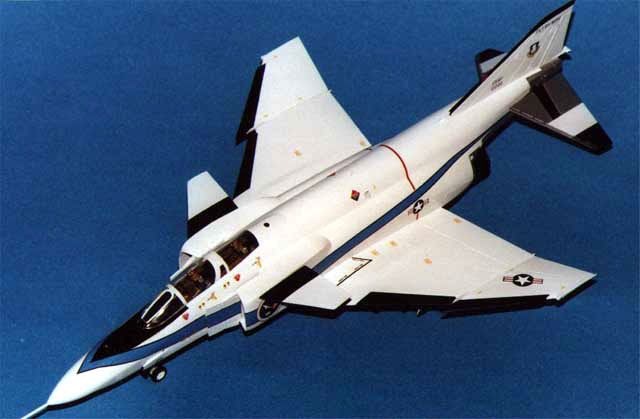|
F-4 Phantom CCV
by Francesco Pernice
|

|
|
McDonnell-Douglas F-4
Phantom CCV |

HyperScale is proudly supported by
Squadron.com
The F-4 with the serial number 12200 is well know as the " Father of
all Phantoms ".
This Hybrid has been frequently used as a flying test bed first to
check some improvements made to the several versions of the F-4, then as
a testimonial for the growing technology called FLY-BY-WIRE.
The aircraft was picked off the assembly line while it was being
assembled as an F-4B in order to become the prototype F-4E with a Vulcan
cannon added in the bay formerly occupied by the cameras. Later on the
machine gun was removed.

After a Fly-By-Wire device was assembled on, the small canard
surfaces and the manouvering slats were added.
This is my 1/72 scale Phantom CCV.
The easiest way to build a model of this interesting version of the
Phantom is to start with the 1/72 scale Hasegawa model of the RF-4C. The
modularity and the great number of spare parts will provide the best
chance to finish your project in reasonable amount of time.
The characteristics of the Phantom CCV are:
Wings
Underside have the hooks for the catapult wires and the Sparrows bay
only in the back placements. The front ones are similar to the recce
version.
In the early type of the CCV, the slats were not mounted and they
were added according to the assembly of the canard surfaces.
Canard
They were inserted in two bulges over each intake with neutral
dihedral.
Vertical Stabilizer
This is the simple type with the absence of the Pitot tube on the
incoming edge.
Tailerons
Formerly simple then without triangular reinforcement in the "slatted
" version.
Nose
Rectangular plates were mounted to close the gas dissipators of
Vulcan cannon tested on the F4E.
Afterburners
They are the E version with long burners. In the box are given as
spare parts.
It is possible to build this one aircraft in different development
stages.
The easiest version, the one without canard, need only the assembly
following the suggestions given previously and the SUPERSCALE 72-137
decal sheet (which is rare but not impossible to find).
The next stage is more difficult requiring the bulges over the canard
over each air intake, but with good reference images, a good sense of
proportions, plasticard and epoxy putty, a nice representation can be
made.
The actuators of the slats are already given in the kit as spare
parts, other way the slats have to be found in the " bank of spare parts
" owned by every modeler.
There are many more little details for that might be discussed, but
good reference material is more useful than my words.
The model was painted gloss white, and blue FS15044.
Click on the thumbnails
below to view larger images:
Model, Images and Text Copyright © 2002 by
Francesco Pernice
Page Created 16 June, 2002
Last Updated 04 June, 2007
Back to HyperScale
Main Page
Back to
Features Index
|
Home
| What's New |
Features |
Gallery |
Reviews |
Reference |
Forum |
Search